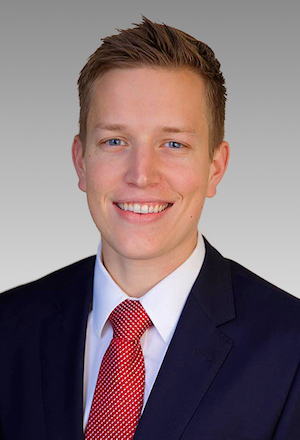 In 1985, D.A. Davidson and Co., a full-service investment firm with roots in Montana, launched a Student Investment Program with Montana State University. The program gives a school close to one of the company's locations $50,000 to invest in the stock market. Students in senior-level investment courses spend a year consulting with any one of Davidson’s 21 program advisors on investment strategies to use the money.
In 1985, D.A. Davidson and Co., a full-service investment firm with roots in Montana, launched a Student Investment Program with Montana State University. The program gives a school close to one of the company's locations $50,000 to invest in the stock market. Students in senior-level investment courses spend a year consulting with any one of Davidson’s 21 program advisors on investment strategies to use the money.
The now 80-year-old firm started the program because it dovetailed with the firm's philosophy that community involvement reduces financial illiteracy and helps firms understand younger generations.
Davidson isn’t the only financial firm aware of the fact that students need hands-on experience. Other large companies--wirehouses, trading firms and their executives--have funded or contributed to the installation of trading floors within universities that simulate the real deal so finance majors can have a taste of what they might be in for.
But it’s difficult to get undergrads and graduates close to the risks that they’ll have to take in real life.
Davidson’s program is placing students as close to the action as they possibly can be by taking on any losses and having student teams manage the $50,000 from a Davidson account.
At the end of the program, half of the portfolio gains above 5 percent are gifted to the student teams.
According to the firm, in 2017 Montana State University had the highest return in the program, 10.6 percent, while Creighton University boasted 6.7 percent.
D.A. Davidson said these returns were benchmarked against the S&P 500, which had a 12.6 percent return, and the Dow Jones' 11.3 percent return during the same period.
Gonzaga University in Spokane, Wash., meanwhile, won the Fred Dickson Memorial Award. The award pays homage to Davidson's former chief market strategist and market expert who passed away in 2014 at the age of 68. The award is given to a team for its overall excellence, apart from returns (the Gonzaga team won a 5.2 percent return). Davidson will award the school an expense-paid trip to a Davidson conference.
“The actual hands-on experience is lacking for students,” says Brent Williams, a research analyst at D.A. Davidson and a co-director for the SIP. The program "helps to solidify a lot of the practices that they’re learning in class,” he adds.
Davidson is pretty picky about who it lets into the program. It has chosen around 20 schools between 1985 and 2017 (a few schools have been removed). Schools like the University of Idaho and Washington State University joined in 1993, while Oregon State University (2010) and Southern Utah University (2011) are the most recent ones. Though Davidson did not explicitly say why it chose the schools, it said each school administers the SIP differently.
Williams said the firm has been able to learn more about millennial investors through the program and even hire a few of the participants to join its own ranks. A few years ago, Davidson hired one of its research associates from the University of Utah program.
One of the insights Davidson has learned mirrors or maybe confirms what the financial services industry has already witnessed with today’s investors: that they shoud invest for reasons beyond returns.
According to Williams, environmental, social and governance (ESG) investing is what millennial investors and possibly Gen Zers are interested in.
This has allowed Davidson to learn as well, since “a lot of the investments that students choose, they are companies that score well and are socially responsible,” he says.
Davidson has decided to evaluate ESG companies more since a growing number of investors are expressing their interest in it.
“Those students will be taking the torch in investment management, and so this will be a great way to do our part in that,” Williams says. “Invest in the health of the industry.”